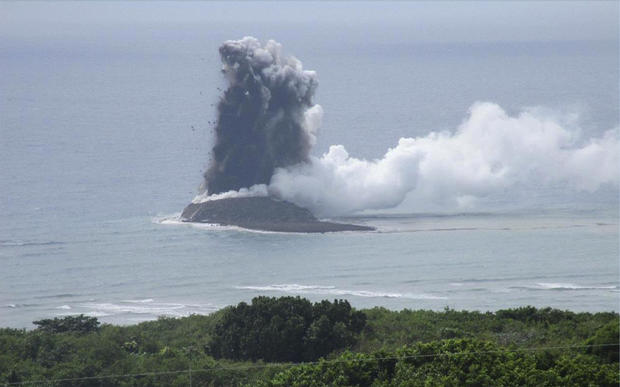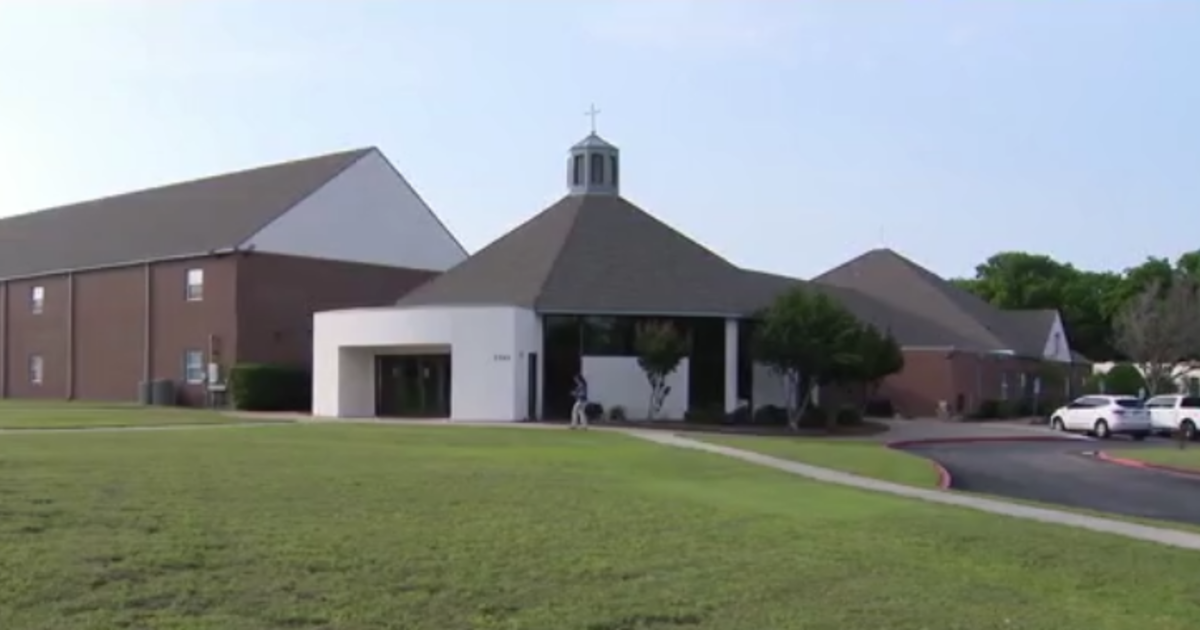Underwater volcanic eruption creates new island off Japan, but it "may not last very long"
An undersea volcano erupted off Japan three weeks ago, providing a rare view of the birth of a tiny new island, but one expert said it "may not last very long" if volcanic activity stops.
The unnamed undersea volcano, located about half a mile off the southern coast of Iwo Jima, which Japan calls Ioto, started its latest series of eruptions on Oct. 21.
Within 10 days, volcanic ash and rocks piled up on the shallow seabed, its tip rising above the sea surface. By early November, it became a new island about 328 feet in diameter and as high as 66 feet above the sea, according to Yuji Usui, an analyst in the Japan Meteorological Agency's volcanic division.
Volcanic activity has increased near Iwo Jima and similar undersea eruptions have occurred in recent years, but the formation of a new island is a significant development, Usui said.
According to the Japan Times, Iwo Jima is an active volcano about 40 miles north of the Fukutoku-Okanoba underwater volcano, which had a major undersea eruption in 2021.
Volcanic activity at the site has since subsided, and the newly formed island has somewhat shrunk because its "crumbly" formation is easily washed away by waves, Usui said.
He said experts are still analyzing the development, including details of the deposits. The new island could survive longer if it is made of lava or something more durable than volcanic rocks such as pumice.
"We just have to see the development," he said. "But the island may not last very long."
Setsuya Nakada, a professor emeritus of volcanology at the University of Tokyo, told the Japan Times that he flew over the new island on Friday.
"In an earlier stage, a vertical jet of black color, debris — which is a solidified magma — and water gushed upward," Nakada said. "Since Nov. 3, the eruption started changing and the emission of volcanic ash continued explosively."
New island in Japan is not the first
Undersea volcanoes and seismic activities have formed new islands in the past.
In 2013, an eruption at Nishinoshima in the Pacific Ocean south of Tokyo led to the formation of a new island, which kept growing during a decadelong eruption of the volcano.
Also in 2013, a small island surfaced from the seabed after a massive 7.7-magnitude earthquake in Pakistan. In 2015, a new island was formed as a result of a monthlong eruption of a submarine volcano off the coast of Tonga.
Similar islands formed off Japan in 1904, 1914 and 1986 but later vanished after volcanic activity stopped, Forbes reported.
Of about 1,500 active volcanoes in the world, 111 are in Japan, which sits on the so-called Pacific "Ring of Fire," according to the Japan Meteorological Agency.
Iwo Jima was the site of some of the fiercest fighting of World War II, and the photograph taken by AP photographer Joe Rosenthal of a flag-raising atop the island's Mount Suribachi on Feb. 23, 1945, came to symbolize the Pacific War and the valor of the U.S. Marines.
The classic photo is the only photo ever to win the Pulitzer Prize the same year it was taken. Rosenthal denied charges it was "staged" until his death in 2006. The photo was used as the basis for the Marine Corps War Memorial in Washington, D.C., completed in 1954.





